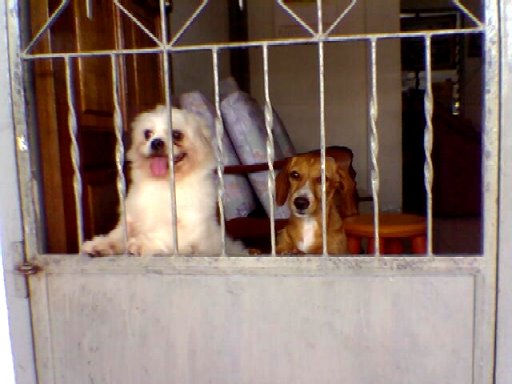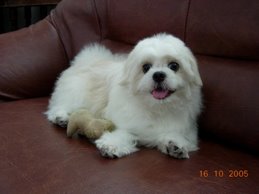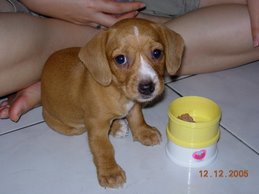Regular Dog Nail Clipping Helps Keep Your Dog Happy And Healthy
Grooming your dog on a regular basis will help keep him in great shape. Every dog owner wants the best for their pet, so to ensure a healthy, happy companion, maintenance tasks are performed on a regular basis, or as required. One such task is dog nail clipping. Many owners are content to do this job themselves, but if unsure it is best to seek the help of a dog groomer or vet in Marlton, NJ. Clipping your dog's nails does require some basic knowledge, as outlined below.
If your dog's claws remain unclipped they will curl in. This kind of unnecessary pressure on the toes means that your dog may walk uncomfortably, while the nail can sometimes dig into the paw pad, causing pain and infection. Monthly trimming helps to avoid this and ensures the quick, or the part of the nail where nerves and blood vessels join the claw, does not grow with the nail until it can't be clipped correctly.
There are two basic types of nail trimmers; the standard scissors type, and the guillotine type, which is the easier of the two to use. The guillotine trimmer has a stationary ring where the nail is placed and cut as the blade moves up. The scissors trimmer is best used to shorten curved nails. Place it at right angle to the nail and squeeze the handles to cut.
The color of your dog's nails depends on the color of the adjacent skin and hair. Claws that are of a lighter color will be easier to trim than darker ones, because the quick is more easily seen. Cut the nail to within about 2 mm of the quick.
If the nail is dark and you can't see the quick clearly, the correct technique is to make multiple small cuts from the tip of the claw until you see an oval that is pink or gray in color, on the cut nail surface. Remember to always use clean, sharp trimmers, as this will ensure a clean and trouble free cut. You may find that the rear claws need trimming less often than the front ones as they tend to be shorter. As a finishing touch, smooth the cut surface with a file.
The trimmer blade should always be facing toward you, not your pet, so the quick isn't cut into. If cut it will result in bleeding and pain for your dog, so always be careful. However, if there is an accident, the bleeding should stop on its own after a few minutes.
Dew claws are vestigial claws that are found on the paw's inner side. These claws may grow long and dig into the toe-pad if left unclipped. Use a guillotine style clipper to cut these as they are easily moved into position. Any dew claws on the inner paw surface can also be trimmed.
Clipping your pet's nails can only increase confidence and skill the more you do it. However, if you would rather someone with more experience do this job for you, seek out a local dog groomer in the city of Marlton, NJ, and help keep your dog in great condition.
If your dog's claws remain unclipped they will curl in. This kind of unnecessary pressure on the toes means that your dog may walk uncomfortably, while the nail can sometimes dig into the paw pad, causing pain and infection. Monthly trimming helps to avoid this and ensures the quick, or the part of the nail where nerves and blood vessels join the claw, does not grow with the nail until it can't be clipped correctly.
There are two basic types of nail trimmers; the standard scissors type, and the guillotine type, which is the easier of the two to use. The guillotine trimmer has a stationary ring where the nail is placed and cut as the blade moves up. The scissors trimmer is best used to shorten curved nails. Place it at right angle to the nail and squeeze the handles to cut.
The color of your dog's nails depends on the color of the adjacent skin and hair. Claws that are of a lighter color will be easier to trim than darker ones, because the quick is more easily seen. Cut the nail to within about 2 mm of the quick.
If the nail is dark and you can't see the quick clearly, the correct technique is to make multiple small cuts from the tip of the claw until you see an oval that is pink or gray in color, on the cut nail surface. Remember to always use clean, sharp trimmers, as this will ensure a clean and trouble free cut. You may find that the rear claws need trimming less often than the front ones as they tend to be shorter. As a finishing touch, smooth the cut surface with a file.
The trimmer blade should always be facing toward you, not your pet, so the quick isn't cut into. If cut it will result in bleeding and pain for your dog, so always be careful. However, if there is an accident, the bleeding should stop on its own after a few minutes.
Dew claws are vestigial claws that are found on the paw's inner side. These claws may grow long and dig into the toe-pad if left unclipped. Use a guillotine style clipper to cut these as they are easily moved into position. Any dew claws on the inner paw surface can also be trimmed.
Clipping your pet's nails can only increase confidence and skill the more you do it. However, if you would rather someone with more experience do this job for you, seek out a local dog groomer in the city of Marlton, NJ, and help keep your dog in great condition.
>














.jpg)






.jpg)

0 comments:
Post a Comment